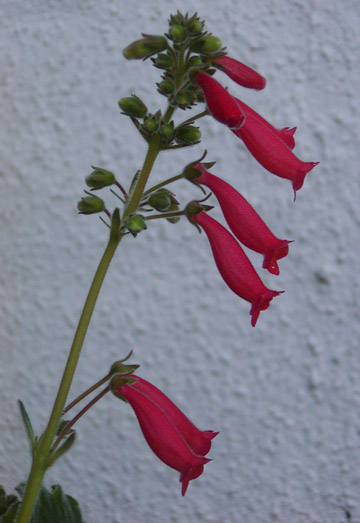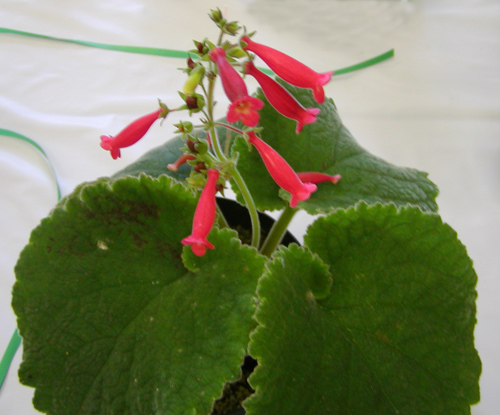Sinningia cochlearis
This picture, taken May 28, 2007, shows the flowerstalk on a plant grown by Jon Dixon.
Sinningia cochlearis is closely related to S. gigantifolia.
Because S. gigantifolia has a wider geographical range than S. cochlearis, and the range of S. cochlearis is contained within that of S. gigantifolia, Perret et al. conclude that S. cochlearis has evolved from within S. gigantifolia with specialization for a particular type of environment (open highlands rather than highland forest).


